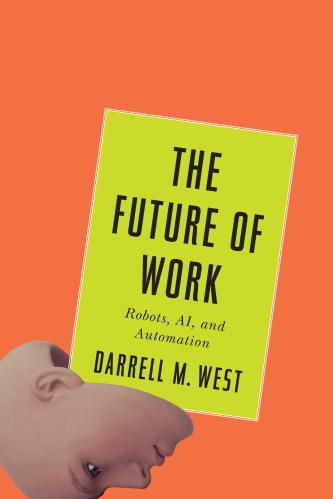I was surprised in the 1970s when I moved into graduate student housing to discover the previous tenant had kept his cable television contract active. Up to that point, I had lived solely in the world of broadcast television, where there were half a dozen channels with strictly regulated content. In flipping through the cable channels one night, I discovered movies featuring explicit sex among the program offerings.
I did not realize it at the time, but this was an early illustration of how sex has driven considerable technology innovation. As I note in my book, “The Future of Work: Robots, AI, and Automation,” when the world moved from cable television, movie videos, and DVDs to chatrooms, video-streaming, and e-commerce, the sex industry was a crucial factor in the changing digital landscape.
In the early days of cable and the internet, one of its most profitable sectors was pornography. Customers were willing to pay substantial money for access to X-rated videos and websites with interactive chatrooms. They used the internet to find like-minded people with whom they could talk, meet, or exchange suggestive pictures. Without leaving the privacy of their homes, viewers could engage in conversation with exotic performers or watch erotic movies.
Perhaps it should come as no surprise in the latest round of emerging technologies that robotic companions are taking on exotic tasks. At his Abyss Creations in San Marcos, California, Matt McMullen makes “Real Dolls” that have audio, sensory, and physical capabilities. One of his robotic creations is a humanoid sex toy called “Harmony.” According to a news report in the Guardian, “Harmony smiles, blinks and frowns. She can hold a conversation, tell jokes and quote Shakespeare. She will remember your birthday, what you like to eat, and the names of your brothers and sisters. She can hold a conversation about music, movies and books. And of course, Harmony will have sex with you whenever you want.”
While most people are not willing to pay several thousand dollars for a sex robot, few want to limit the choices for those who are interested in that market. Most Americans are either liberal or libertarian in their lifestyle views. They do not think the government should regulate personal choices or kinky products that pose no danger to consumers and do not harm other people.
But there is a dark side to erotic technology that has generated great concern: some internet platforms have enabled sex trafficking of young girls. Social media sites have been used to promote abusive behavior, sex shaming, or revenge porn. And buried deep in the dark web are sites that feature hardcore sexual exploitation of young children.
These uses of digital technology deeply worry Americans. They fear platforms that prey on innocent children and promote unlawful behavior. In the same way that many jurisdictions police illicit behavior at brick-and-mortar establishments, advocates want governments to stop digital applications that promote or facilitate exploitative behavior.
The manner in which oversight unfolds in industries tied to sex is crucial because practices there often influence the rules and norms that develop in other sectors. For example, public concern about X-rated movies led the entertainment industry to develop a ratings system so viewers of mainstream movies could anticipate what types of scenes were part of those films. Those movie guidelines later extended to video games, songs, and music videos.
To combat sex trafficking and revenge porn, policymakers already have moved away from the libertarian impulses of the consumer market to legislation designed to hold platforms accountable for abusive behavior. As an illustration, President Donald Trump recently signed the Fight Online Sex Trafficking Act that allows people to sue those who “knowingly” engage in trafficking.
By shifting in this direction, policymakers are paving the way for future restrictions on digital technology. In the aftermath of the Cambridge Analytica disclosures and Facebook CEO Mark Zuckerberg’s congressional testimony, pending federal, state, and local legislation would require disclosure of social media advertising that seeks to influence U.S. elections; strengthen privacy protections, promote cybersecurity, and limit artificial intelligence that discriminates based on biased information; beef up the legal liability for accidents involving autonomous vehicles; and make sure robots of all kinds are subject to human control.
Rather than being an exception, tougher laws related to sex are leading indicators of broader societal changes and legislative impulses. As happened with other technologies, early enthusiasts usually focus on the beneficial aspects of new developments, not their societal risks. It takes a while to see downsides of path-breaking technology, but policies and regulations often follow early waves of innovation. If people want to forecast future technology rules, they should pay attention to the sex industry because it often signals where policy trends are headed.








Commentary
How sex drives innovation and digital regulation
June 15, 2018